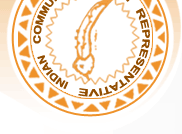

 |
 |
||||||
| IHS HOME | ABOUT IHS | SITE MAP | HELP | ||||


|
These plug-ins may be required for the content on this page:
IHS Plug-in Page Use site contact if unable to view a particular file |
Everyone asks about the relevancy or need to continue (start?) using the CHR data reporting forms and software. The serious answer to that is MOST DEFINITELY!! Now more than ever tribal CHR Programs should get on the bandwagon to toot their own horns to Congress the only effective way possible – through measurable, relevant statistics! Remember, those data are $$$$$!!
Okay, we’ll get off the soapbox and back to the “Fun” aspect… with an insincere apology to David Letterman, here’s the CHR Program version of the “Top 10 Reasons” Listings that Mr. Letterman has made a quintessential part of American culture. Hope you CHRs enjoy it, brought to you exclusively from the fertile imagination of Ms. Dione Harjo, whose creative energy exhausts me.
PS - Dave, if you’re offended it’s Dione’s fault... Send your lawyers after her. Just remember imitation is the highest form of flattery! Would this fall under FTCA? (Just kidding!)
› Top Ten Reasons to do Your Chr PCC Reports [word 42k]
Woody Hanson, Cherokee CHR and Oklahoma area association CHR (OAACHR) President, is a snake handler who provides injury prevention trainings on how to avoid snakebites and other topics. He's also quite the local Thespian, along with Cindy Gilks, Muscogee Creek CHR and OAACHR Vice-President. Together they often use humorous skits to provide health education on many topics to a wide variety of audiences.
Oklahoma Area Association of CHRs (OAACHR) won the 2003 Volunteer Organization of the Year Award from the National Kidney Foundation (NKF) of Oklahoma. This Award was based on OAACHR accomplishments in conducting statewide “mini” health screenings which led NKF to address diabetes as well as kidney disease in future Kidney Direct Outcomes Quality Initiative (KDOQUI) guidelines. The award also reflected OAACHR’s success in providing education courses to tribal CHR Programs to the extent that some of the Oklahoma Tribal CHR Programs have taken the NKF's "Kidneys in the Classroom" program, modified it culturally and currently use it as a teaching tool for prevention of kidney disease in newly diagnosed AI/AN diabetics.
(Excerpts from 1974, A Study of Indian Health Service and Indian Tribal Involvement in Health; Department of Health, Education and Welfare)
The Community Health Representative (CHR) Program evolved to become the largest program originally contracted to the tribes, not only in dollars and number of people involved, but also in the number of tribes holding contracts. The first CHR activity was designed to contain the spread of tuberculosis throughout several American Indian communities. CHR contracts were held by 256 tribes who employed over 1,200 CHRs and CHAs. In terms of accomplishments, the program was most successful. The I H S described it as the tribes' own program and distributed a variety of literature and public statements praising its accomplishments.
|
Accessibility
-- Disclaimers
-- Website
Privacy Policy -- Freedom
of Information Act Kids Page -- No Fear Act -- Frequently Asked Questions -- USA.gov -- HHS |
||||